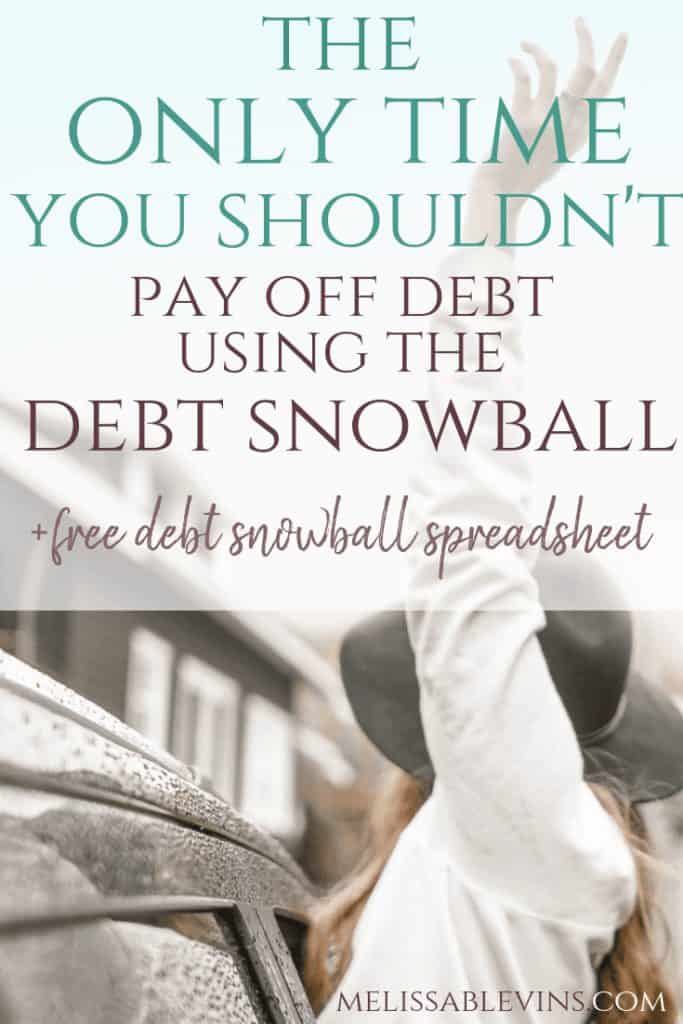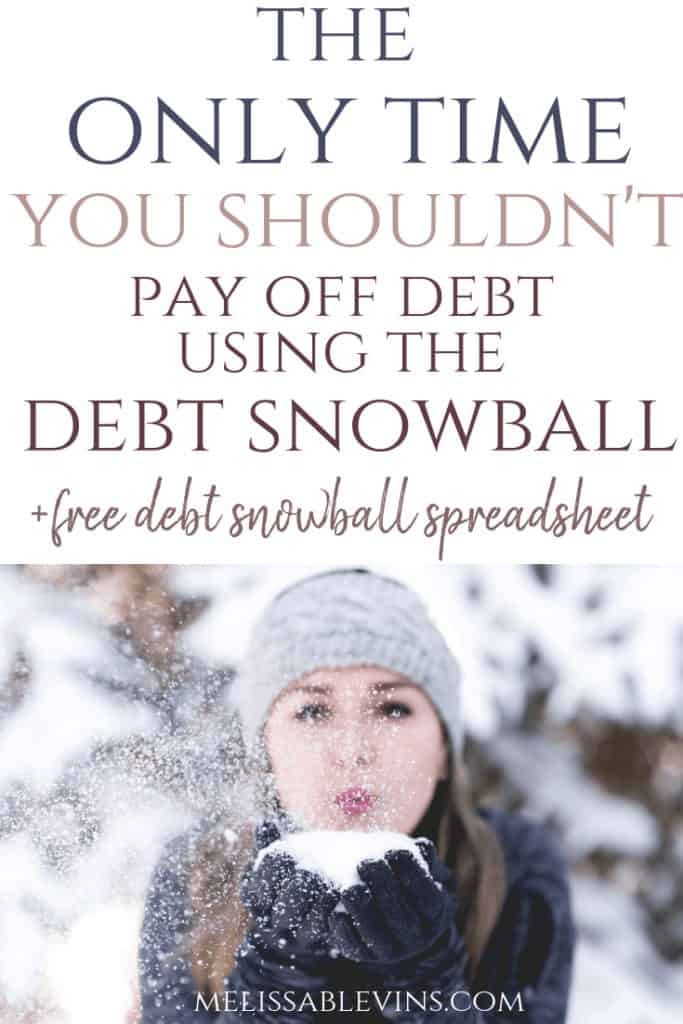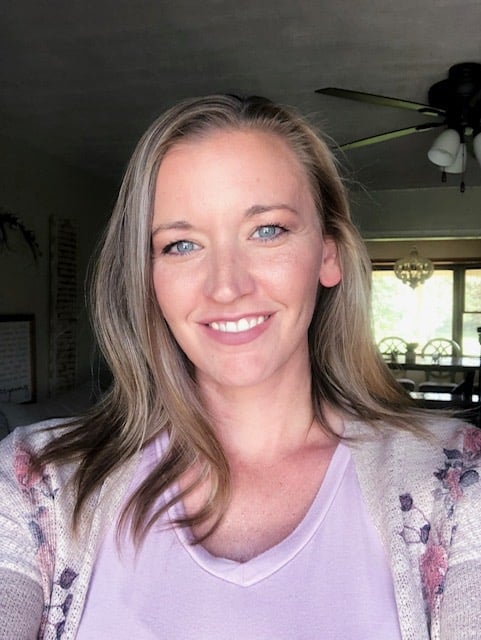This post may contain affiliate links. Click here to read my full disclosure.
Dave Ramsey made the debt snowball the most popular method for paying off your bills. There are many reasons why you should pay off your obligations fast instead of letting them linger. Today I’m sharing my top reasons the snowball method is the best way to pay off debt fast.
And at the end of the post, I’ll share one reason you should skip the debt snowball and which method you should use instead. I’ll also give you a free copy of the spreadsheet I use to track my repayment goals.
Related:
- 3 Debt Payoff Strategies to Help Payoff Debt Faster
- Top 4 Tips for Getting Out of Debt in 2019
- What a Woman Should Do When Her Partner Has Debt
- 8 Extreme Frugal Living Ideas You Probably Haven‘t Considered
The Case for Paying Off Debt Fast

Let’s be honest. You didn’t get into this mess overnight. Think about your financial situation over the last year.
Then remember back to a time before you owed anyone anything. Maybe you were a college student.
Maybe you were still in high school, and you fell prey to credit card company vultures. Remember how much simpler life was back then?
Whatever your cause for getting buried in debt, it’s not too late to dig yourself out, and this method might be right for you.
There is a direct correlation between Americans’ peak income earning years and peak debt years.
According to a study by Time, here’s a breakdown of how much Americans owe, based on age:
Under 35: $67,400
35–44: $133,100
45–54: $134,600
55–64: $108,300
65–74: $66,000
75 and up: $34,500
Parents are more likely to accumulate debt due to upgrading their housing, paying for extracurricular activities, such as dance, cheer, and sports camps, and paying for their kids’ college tuition.
80% of you reading this right now are women who fit into the 35-44 age bracket. What does that debt number look like to you? High? Low? Are you somewhere around there?
Let’s assume that you owe $65,000 in cars and credit card debt. Forget about the house for a minute. Your minimum payments and balances owed are as follows:
- $30,000 owed on a Chevrolet Silverado (hubby’s truck), payment of $600 for 60 months
- $12,000 owed on your SUV $250 per month for 48 months
- $20,000 owed on a home equity loan used to put in a swimming pool last year $220 per month minimum payment
- $3,000 owed to Capital One Savor Card with a minimum payment of $55 per month
Your total owed is $65,000 (not counting the house), with minimum monthly payments of $1125. Let’s assume your household income after taxes is $60,000. Are you seeing how scary it is that you owe more than you make in a year?
$1125 is 22.5% of your income going to debt! Now, if you allow 25% of your income towards your house, you’re living on 52.5% of your income.
If you tithe (or donate) 10% of your income, you’re living on 42.5%. That’s not counting what you’re putting towards retirement. Hopefully, you’re (at least) taking advantage of employer matches your company offers. Now let’s look at some different scenarios if you were consumer debt free.
Related Dave Ramsey Posts About Paying off Debt and Gazelle Intensity:
- Debt Snowball vs Debt Avalanche | Dave Ramsey vs Suze Ormon
- Dave Job vs Side Hustle to Make Money: What’s the Difference?
- Gazelle Intensity: The Unhealthy Path to Financial Freedom
Debt Free Except for the House Scenario
If you were completely debt free except for the house, what could you accomplish? Here are some scenarios.
- If you had an extra $1125 per month, that’s $13,500 per year you could add to your retirement accounts.
- You could start saving for your kids’ college 529 plans.
- You could pay off the house in 10 years instead of 30. Here’s how:
Let’s say you bought a house in 2013 for $150,000 at an interest rate of 3.5% with principal and interest payments of $673.57 (now, that’s not counting insurance and taxes). If you put an additional $1,000 per month towards your principal after you’ve paid off your debt, you can pay off the house in just 7 more years, shaving 16 years off your mortgage!
An even better option to consider would be to look at the cost of refinancing to a 10 or 15-year mortgage, which would raise your payment slightly (but not $1100), freeing up some of the income to put towards college savings or retirement.
Think about it. What could you do with the money you’re paying towards debt?
If you were able to live off 50% of your income and save the other 50%, financial independence would be achievable!
Debt Snowball-How to Pay Off Debt Fast

The debt snowball is one of two methods I recommend for paying off debt. Using this method, you list your debts, smallest balance to largest balance owed. Then, after creating a written budget, you take any and all extra income and throw the extra funds towards the smallest balance first, paying minimum payments to the rest of your bills.
As you pay off your balances, the amount you’re able to pay towards each debt increases because your debt snowball is getting larger. There’s an old saying, “You can’t chase two rabbits”, and it means that when your attention is divided between two or more tasks, choose one to increase your odds of success.
So don’t pay more than minimum payments on all debts, and start paying all that you can towards your lower balances. I created a free debt snowball calculator that tells me exactly how effective my extra payments are (and how long until we’re debt free). You can get a copy of it here. We printed ours and keep it on the refrigerator to remind us of our goals!
An example of the debt snowball in action is as follows:
You’ve written out your budget and determined that you have an additional $400 per month left over after paying minimum payments on all debts, groceries, gasoline for the cars, eating out, and all other expenses. Your debts, listed smallest to largest look like this (using the example above):
- $3,000 owed to Capital One at $55.00 per month
- $12,000 owed on SUV at $250 per month
- $20,000 owed on home equity loan at $220 per month
- $30,000 owed on hubby’s truck at $600 per month
You’d take the extra $400 per month and pay $455 per month towards your Capital One card, paying it off in about 6 1/2 months.
Now, Dave Ramsey would tell you to sell that truck in a heartbeat. If your income is $60k take home and you owe more than half of your income in cars that you can’t pay off in 2 years or less, he’d want you to get rid of it.
I’m not Dave Ramsey, and this is your life. You might not be able to sell the truck because you’re upside down and owe more than what it’s worth. If that’s the case, read this post on how to sell an upside down car.
Most of our financial mistakes over the past 10 years have had to do with trading cars with negative equity and financing the negative equity into the next loan.
I’m not here to judge. It took a long time for us to learn from our mistakes. You CAN get back on track!
An Alternative to the Snowball Method: The Debt Avalanche
The only time you would not utilize the debt snowball as your main method of paying off debt fast is when you’re a geeky, analytical person. Let me explain.
The snowball is all about behavior modification. By attacking the smaller debts first, you quickly gain momentum and see results right off the bat! This is a really great method if you’re a free-spirited spender. If you’re motivated by quick wins, the snowball is the way to go.
However, if you’re all about the numbers and saving money, the debt avalanche might be better for you. The debt avalanche actually saves you money in the long run because you pay less interest. By listing your debts highest interest rate to lowest interest rate and paying in that order, you’ll pay less interest and fees, saving you sometimes thousands of dollars.
But sometimes our higher interest rate debts have higher balances, and it can take a while to gain momentum. The last thing you want is to fizzle out. I wrote a great post about the differences between the snowball vs debt avalanche here. Be sure to check it out and don’t forget to grab your free debt snowball spreadsheet so you can start tracking your payoff progress.
If you need help with your own budget including coming up with a plan (or just need advice before you make a big decision, schedule an appointment for a consultation.
Sometimes it helps to air things out and to receive guidance in certain situations. I’m happy to help!

Life is a collection of memories and experiences. There are ups and downs. I am so grateful for God’s grace and am on the journey to a renewed spirit, free of perfectionism. Perfection Hangover offers the sober truth – no filter.


